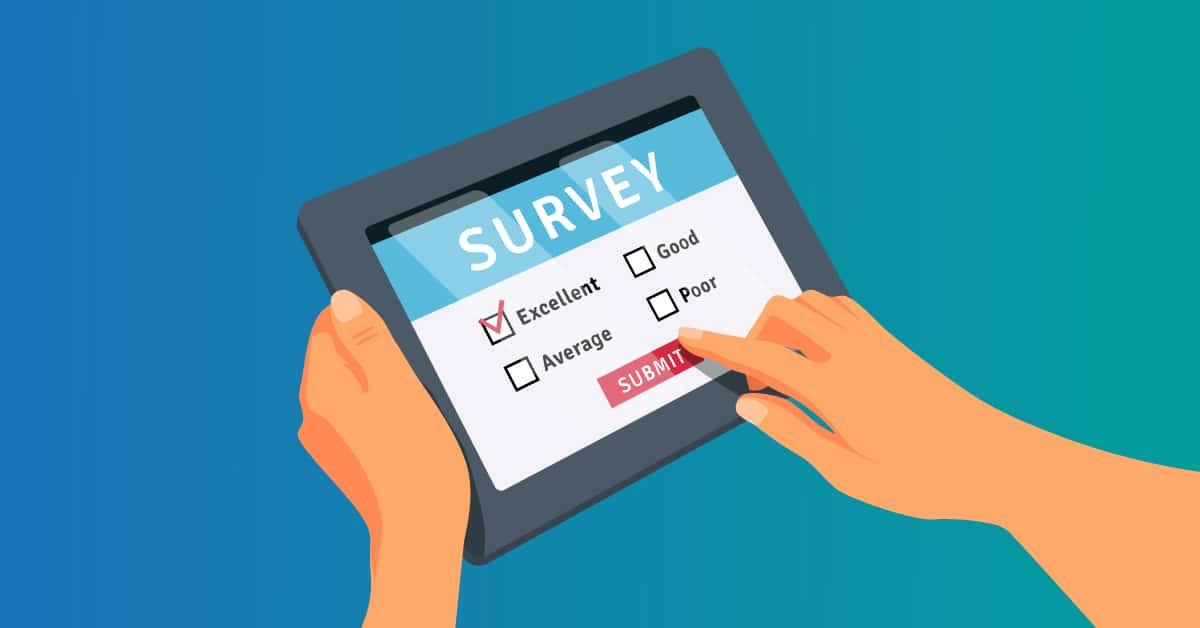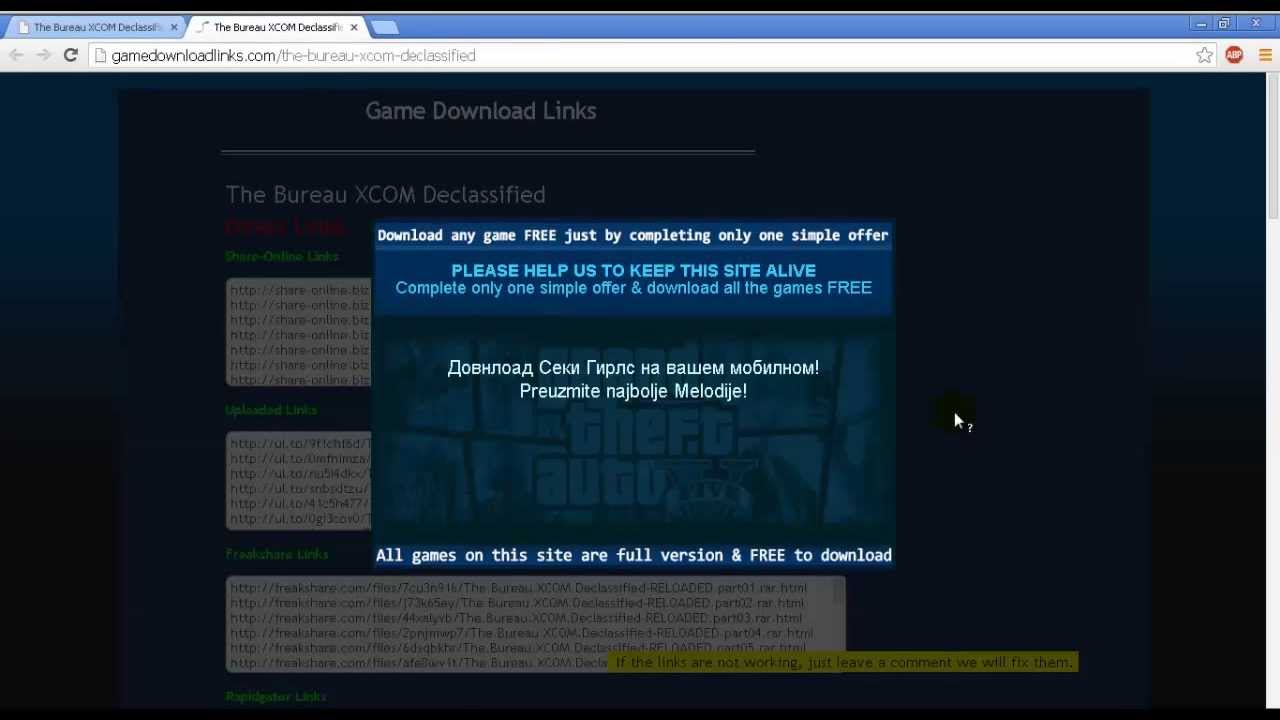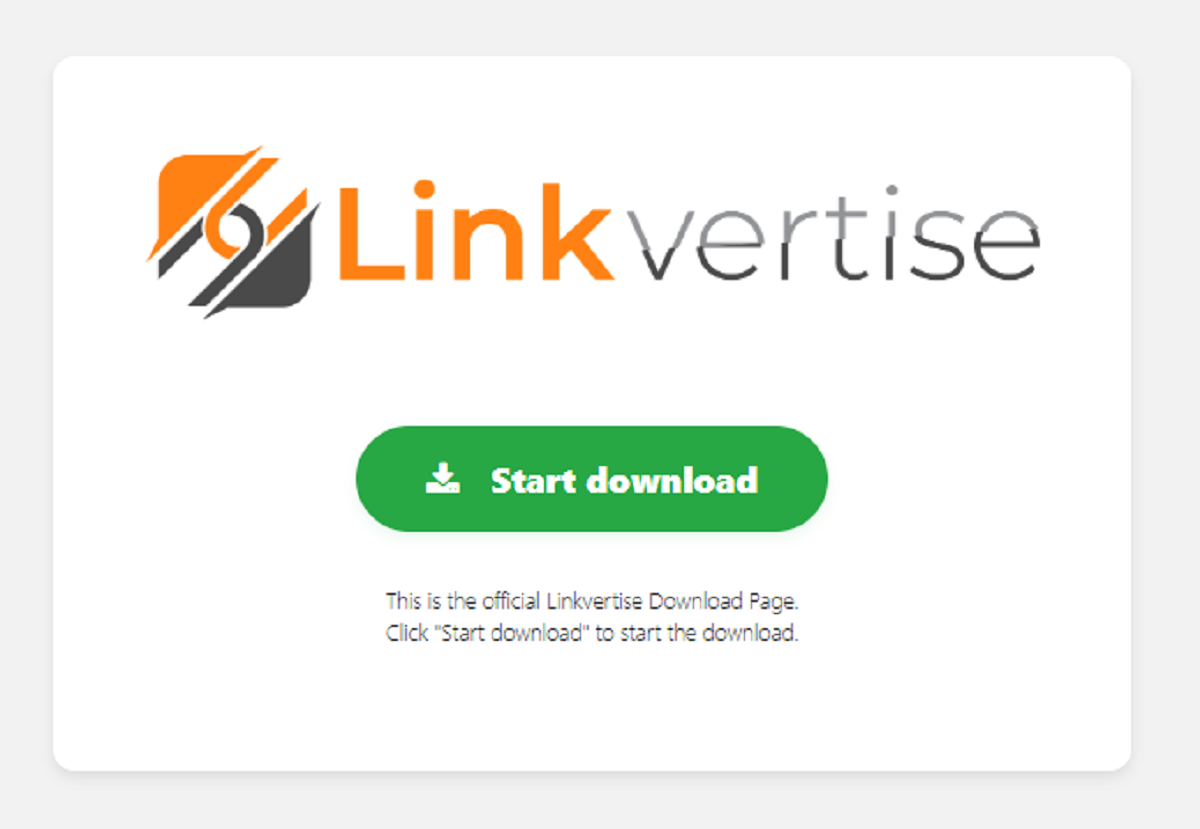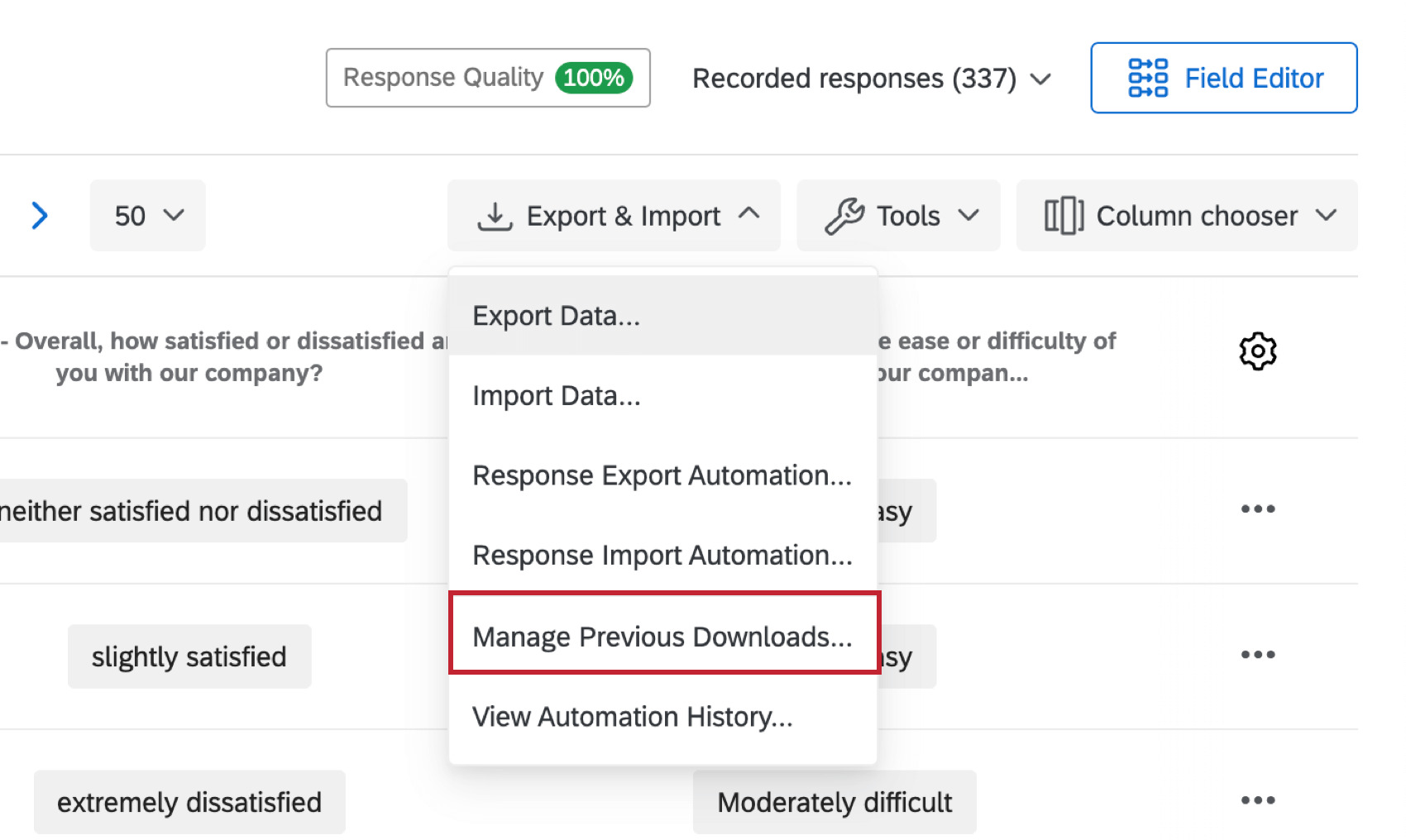Introduction
Have you ever come across a situation where you wanted to download a file, but were stopped by annoying surveys that required you to complete them before gaining access? These surveys are a common technique used by websites to gather user data or monetize their content. However, they can be time-consuming, frustrating, and sometimes even misleading. Luckily, there are ways to bypass these surveys and download the desired files without going through the hassle.
In this article, we will explore various methods and techniques to bypass surveys successfully. Whether you’re trying to access a free software download, a game mod, or any other file that is hidden behind a survey, these methods will help you navigate through the unwanted interruptions and get straight to the file you want.
Before diving into the solutions, it’s important to understand why surveys are used in the first place. This knowledge will help you gain valuable insights into the motivations behind survey implementation and ultimately aid in finding the most effective bypassing techniques.
Understanding the Purpose of Surveys
Surveys are commonly used by website owners and content providers as a means of gathering valuable information about their audience. By presenting users with survey questions, site owners can collect data related to demographics, preferences, and opinions. This data is then used to make informed decisions regarding content creation, marketing strategies, and overall user experience improvements.
Surveys can also be used as a monetization method. Websites may require users to complete surveys before granting access to premium content or downloadable files. This approach allows site owners to generate revenue by partnering with survey providers who pay for completed surveys. In these cases, the surveys serve as a gateway to unlock desired content or downloads.
While surveys can serve legitimate purposes for website owners and content creators, they can also be seen as an inconvenience by users. Many surveys are designed to be time-consuming, requiring users to provide personal details or answer a multitude of questions. Additionally, some surveys may lead to spammy or misleading offers that have little relevance to the original content the user was seeking.
This is where the need for survey bypassing arises. By bypassing surveys, users can avoid the time and effort required to complete them, and gain direct access to the desired files or content. It’s important to note that the purpose of bypassing surveys is not to encourage unethical behavior, but rather to provide a solution for those who find surveys burdensome or wish to prioritize their time.
In the following sections, we will explore several effective methods to bypass surveys available online. These methods are intended to help users save time and frustration, while still respecting the intentions of website owners and content providers.
Reasons to Bypass Surveys
There are several valid reasons why someone may want to bypass surveys when downloading a file. Let’s explore some of the main reasons why users seek to circumvent these survey barriers.
1. Time Efficiency: Surveys can be time-consuming, especially when they require users to answer numerous questions or provide personal information. By bypassing surveys, users can save valuable time and avoid the hassle of going through lengthy survey forms.
2. Privacy Concerns: Some users may be reluctant to provide their personal information or complete surveys that require sensitive data. Bypassing surveys allows users to maintain their privacy and protect their personal information from being shared with third parties.
3. Misleading Offers: Surveys are often used as a tactic to redirect users to offers that are irrelevant or potentially misleading. Users who want to avoid being enticed into signing up for unwanted services or receiving spammy offers may choose to bypass surveys to avoid these deceptive practices.
4. Focus on Core Content: Many users visit websites to access specific files, such as software downloads, game mods, or media files. For these users, the surveys act as unnecessary distractions from the core content they are interested in. Bypassing the surveys allows users to focus directly on obtaining the desired files, without any unnecessary detours.
5. Frustration with Survey Design: Some users may find surveys to be poorly designed or confusing. Bypassing surveys eliminates the frustration that can arise from these poor user experiences, ensuring a smoother and more seamless download process.
It’s important to note that while there are legitimate reasons to bypass surveys, it’s essential to respect the intentions of website owners and content providers. Bypassing surveys should only be done when it aligns with personal preferences and values, without causing harm or engaging in unethical actions.
In the following sections, we will outline effective methods to bypass surveys, empowering users to overcome barriers and achieve their goals without hindrance.
Ways to Bypass Surveys
When faced with surveys that hinder your progress, there are several methods you can employ to bypass them and access the desired files or content. Let’s explore some effective ways to bypass surveys:
1. Using Survey Bypass Tools: Several online tools and browser extensions are specifically designed to bypass surveys automatically. These tools can detect and eliminate survey pop-ups, allowing you to navigate directly to the download link or content you seek. Simply search for reliable survey bypass tools and install them on your preferred browser for a seamless bypassing experience.
2. Disabling JavaScript: Many surveys rely on JavaScript to function properly. By disabling JavaScript in your browser settings, you can often bypass surveys that are built on this technology. However, keep in mind that disabling JavaScript may also affect the functionality of other elements on the website, so it’s advisable to re-enable it once you’ve bypassed the survey.
3. Inspecting Elements on the Webpage: Modern browsers offer built-in tools that allow you to inspect the elements of a webpage. By inspecting the survey element and modifying its properties, you can sometimes disable or bypass the survey. This method requires some basic knowledge of HTML and CSS, but it can be a powerful way to circumvent surveys.
4. Manipulating URLs: Occasionally, survey links are contained within the URL structure of the webpage. By analyzing the URL and removing or modifying specific parameters related to the survey, you may be able to bypass the survey and access the desired content directly. This method requires some trial and error, as each website may have a different URL structure.
5. Finding Alternative Download Links: In some cases, there may be alternative download links available on the webpage that do not require surveys. By thoroughly examining the page and exploring different sections, you may come across hidden or secondary download links that allow you to bypass the survey and download the file directly.
While these methods can be effective in bypassing surveys, they may not always work on every website or survey. It’s important to approach each situation with flexibility and adaptability, and be willing to try different methods until you find one that successfully bypasses the survey.
Now that we have explored the various methods to bypass surveys, it’s time to dive deeper into each technique and gain a better understanding of how to implement them successfully.
Method 1: Using Survey Bypass Tools
One of the easiest and most convenient ways to bypass surveys is by using specialized survey bypass tools. These tools are designed to automatically detect and remove survey pop-ups, allowing you to access the desired content or download links without the need to complete the surveys. Here’s how you can utilize survey bypass tools:
Step 1: Look for reliable survey bypass tools that are compatible with your browser. Popular choices include browser extensions like “Survey Bypass,” “BypassSurveys,” or “Survey Remover.” These tools are typically available for popular browsers such as Chrome, Firefox, and Safari.
Step 2: Install the survey bypass tool of your choice by visiting the browser’s respective extension store. Click on the “Add to Chrome” (or equivalent) button and follow the prompts to install the extension.
Step 3: Once the extension is installed, you will usually see its icon appear in your browser’s toolbar. Click on the icon to activate the survey bypass tool.
Step 4: Navigate to the webpage containing the survey you want to bypass. The survey bypass tool will automatically detect and remove the survey pop-up, allowing you to proceed to the desired content or download link.
Step 5: If the survey bypass tool does not automatically remove the survey, look for an option within the tool to manually bypass surveys. This may involve selecting an option from the tool’s menu or right-clicking on the survey element and choosing the bypass option.
It’s important to note that survey bypass tools may not work on every website or survey. Some surveys employ more advanced techniques to prevent bypassing, such as using CAPTCHAs or other security measures. In such cases, it may be necessary to explore alternative methods to bypass the survey.
Additionally, it’s crucial to ensure that the survey bypass tool you choose is from a reputable source. Verify user reviews, ratings, and the number of downloads to gauge the tool’s reliability and effectiveness.
By using survey bypass tools, you can save time and avoid the frustration of completing surveys. These tools streamline the process, allowing you to bypass surveys effortlessly and access the content or downloads you desire.
Method 2: Disabling JavaScript
Another effective method to bypass surveys is by disabling JavaScript in your browser settings. Many surveys rely on JavaScript to function properly, so by disabling it, you can often bypass the surveys completely. Here’s how you can disable JavaScript:
Step 1: Open your browser’s settings or preferences menu. The location of this menu may vary depending on the browser you are using.
Step 2: Look for the “Privacy & Security” or “Content Settings” option within the settings menu.
Step 3: Locate the “JavaScript” or “Scripting” section. In this section, you will find the option to disable JavaScript.
Step 4: Toggle the switch or checkbox to disable JavaScript. This will prevent websites from executing JavaScript code, including the surveys that rely on it.
Step 5: Once JavaScript is disabled, navigate to the webpage containing the survey you want to bypass. The survey will likely not load, effectively bypassing it and allowing you to access the desired content or download link.
If you encounter any issues or need to re-enable JavaScript in the future, simply follow the same steps mentioned above and toggle the switch or checkbox to enable JavaScript.
It’s important to note that disabling JavaScript can affect the functionality of other elements on the website. Some features or interactive components may not work as intended without JavaScript. However, for simple surveys that rely solely on JavaScript, disabling it should bypass the survey without significantly impacting your browsing experience.
Keep in mind that this method may not work on every website or survey. Some surveys employ additional measures to prevent bypassing, such as using alternative technologies or server-side validation. In such cases, it may be necessary to explore alternative methods to bypass the survey.
By disabling JavaScript, you can often bypass surveys and gain access to the content or downloads you’re seeking. This method offers a straightforward solution for those who prefer to disable JavaScript temporarily to bypass surveys and then re-enable it for normal browsing.
Method 3: Inspecting Elements on the Webpage
Inspecting the elements on a webpage is a powerful technique that allows you to manipulate the structure and properties of different elements, including surveys. By using this method, you can sometimes disable or bypass surveys. Here’s how you can employ this method:
Step 1: Right-click on the survey or the area around it on the webpage that you want to bypass. From the context menu that appears, select the “Inspect” or “Inspect Element” option. This will open the browser’s developer tools.
Step 2: The developer tools typically open as a sidebar or a separate window. Within the developer tools, you should see the HTML structure of the webpage, as well as the associated CSS and JavaScript code.
Step 3: Locate the survey element within the HTML structure. It might be enclosed within `

























